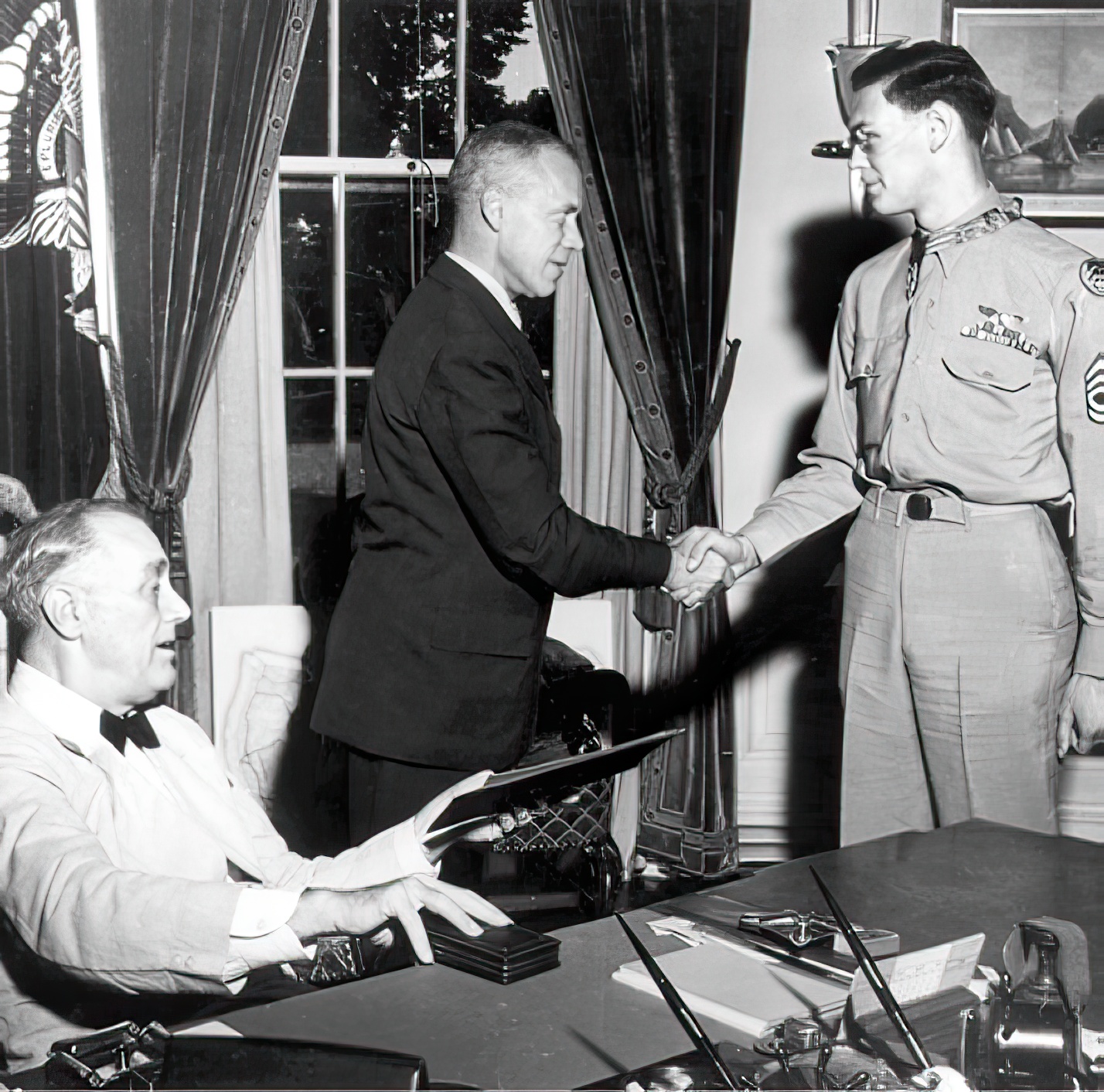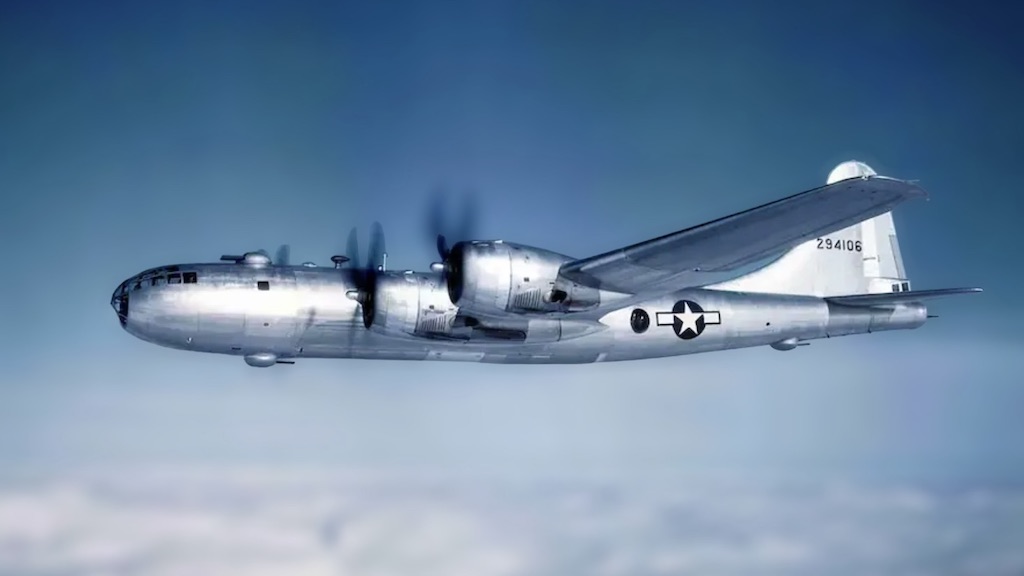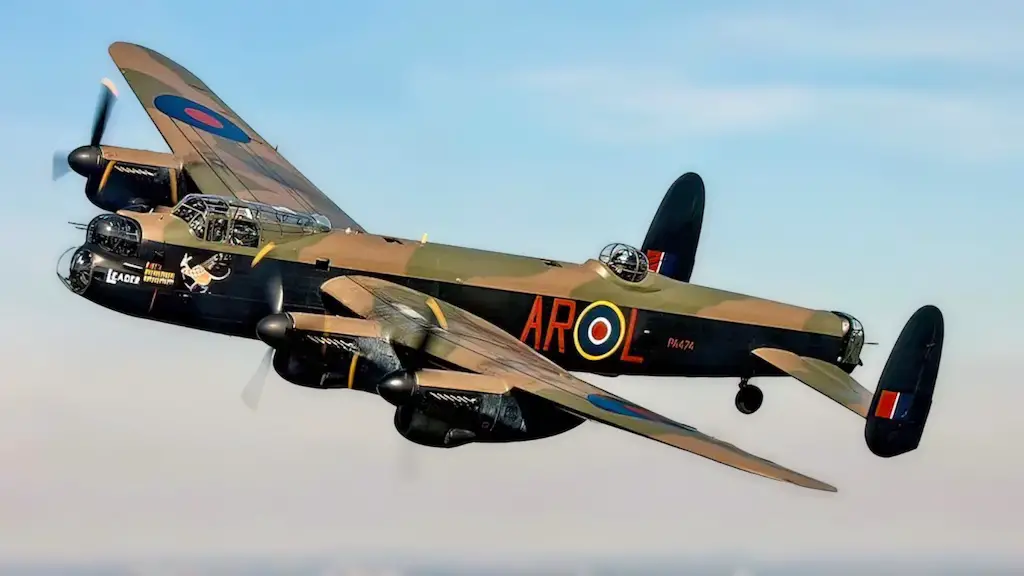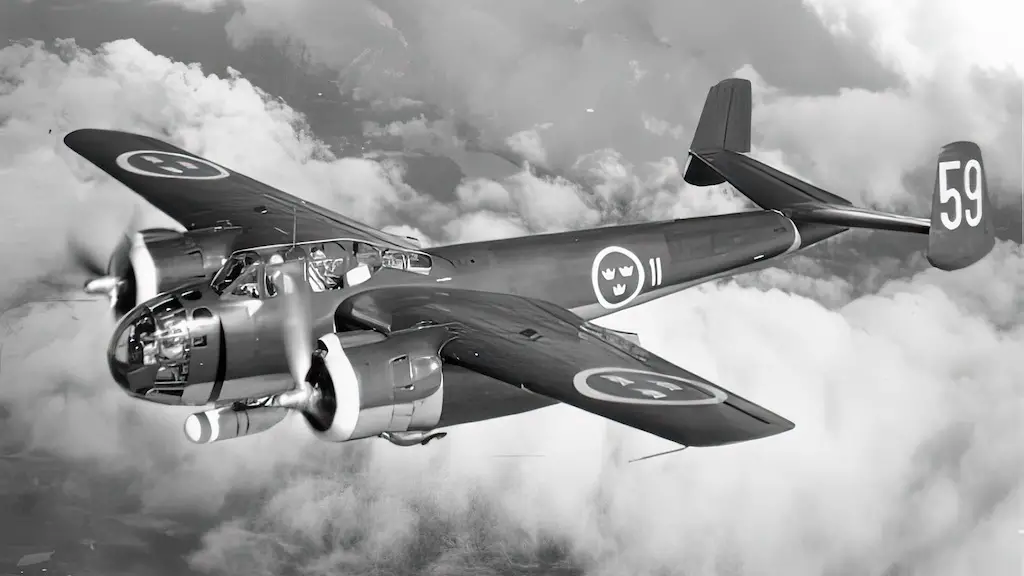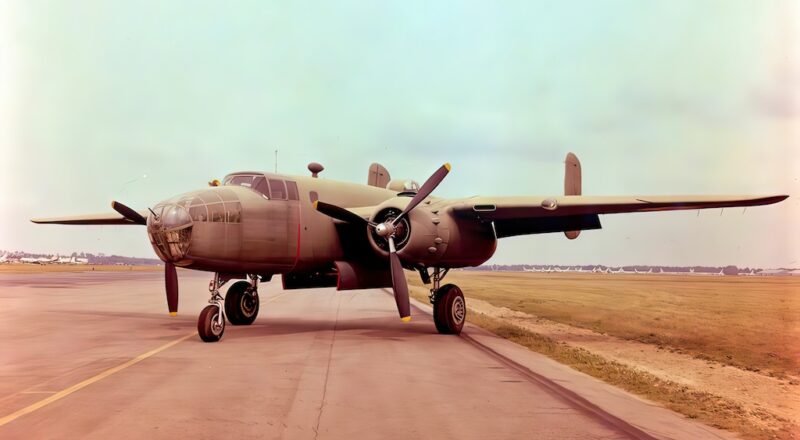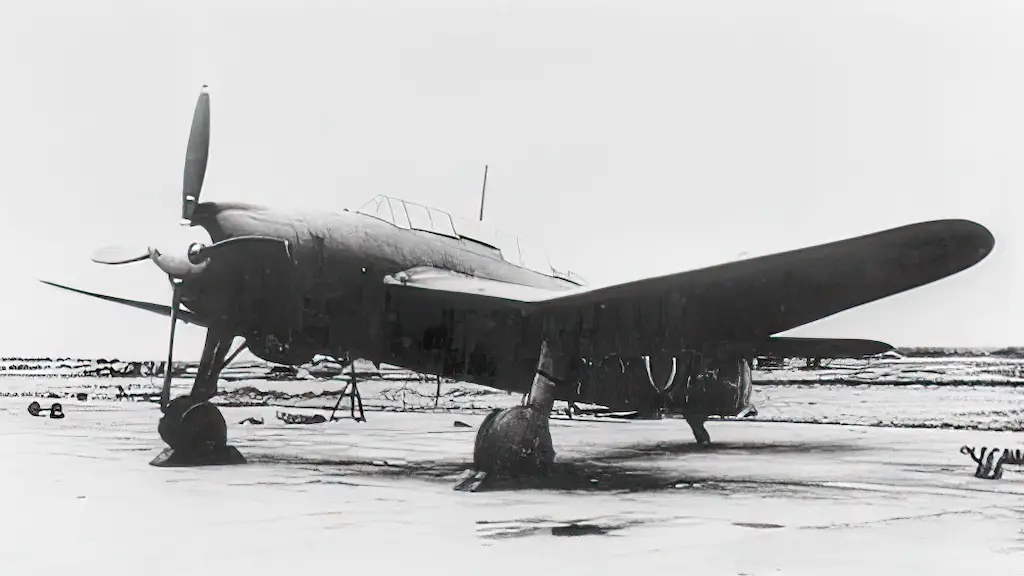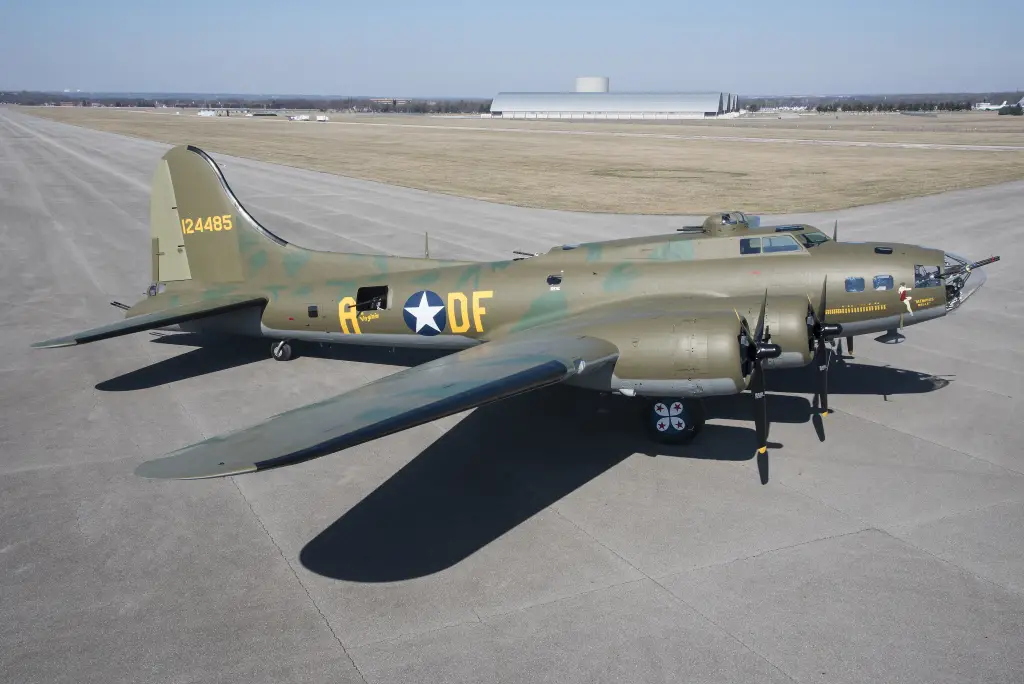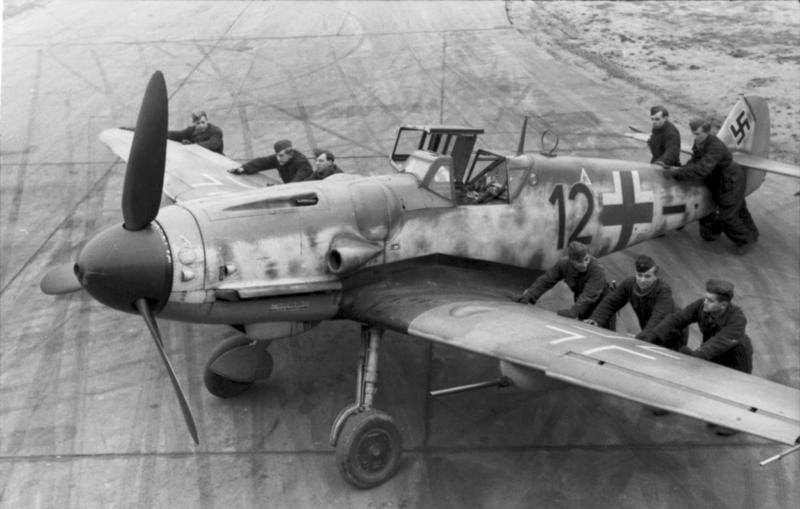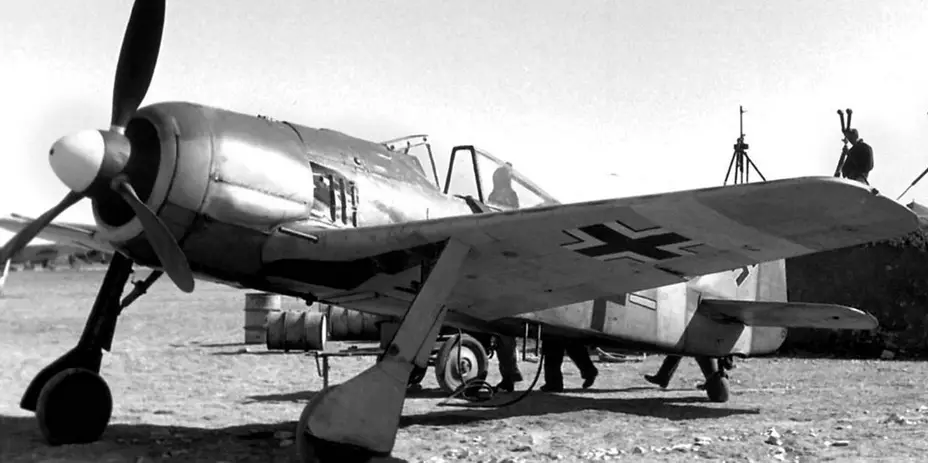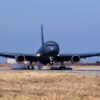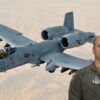December 20th, 1943, marked a pivotal moment for Sergeant Forrest Lee Vossler and the crew of the B-17F, Jersey Bounce Jr. As they flew high above Germany, the intensity of the flak was unlike anything they had encountered. In the midst of chaos, with fellow bombers falling, disaster struck their own aircraft. Pilot John Henderson’s quick thinking narrowly averted a catastrophe, but the plane was far from safe. Engines damaged, the crew faced an uncertain fate as they began to fall behind.
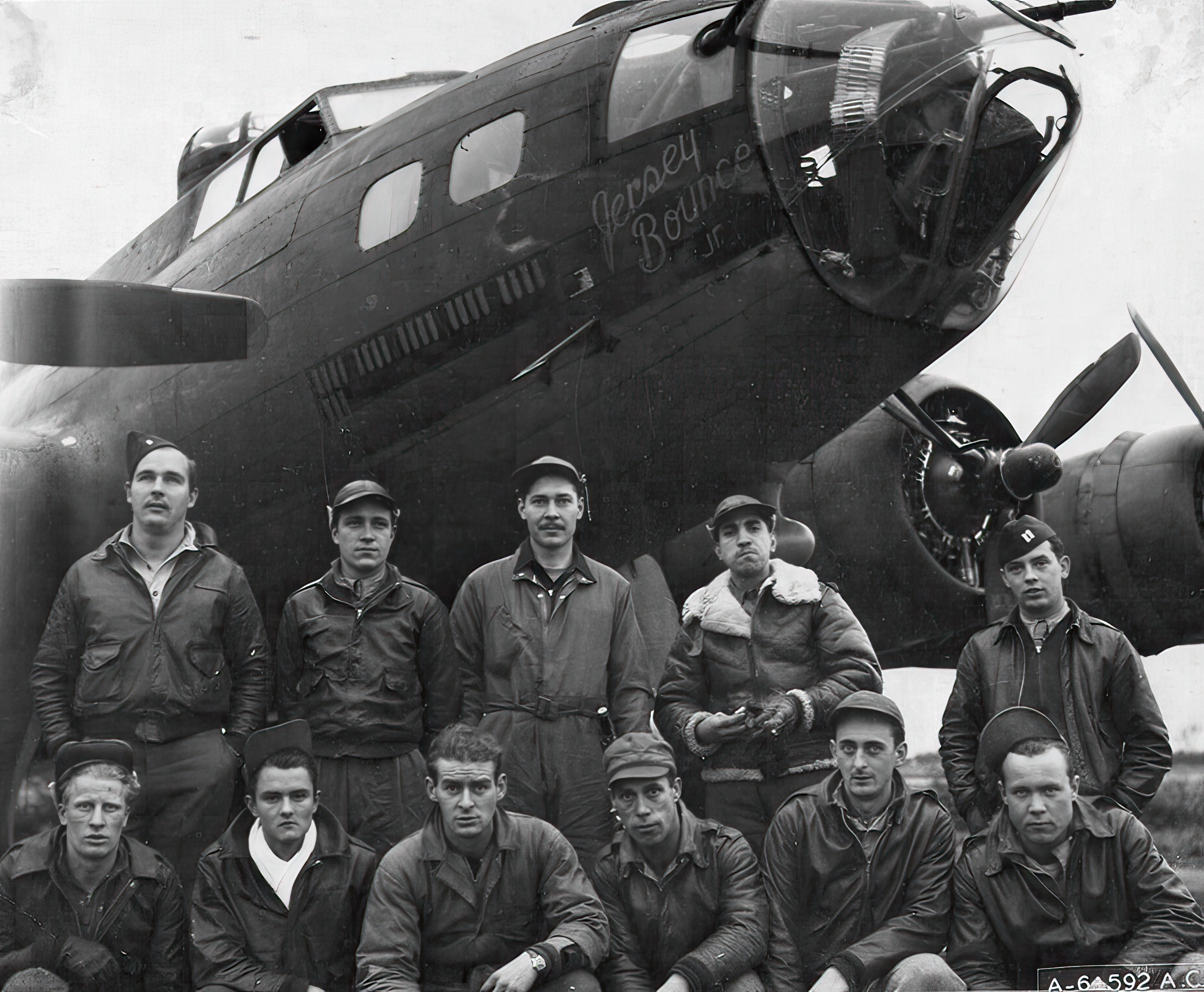
A Fight for Survival
As the Jersey Bounce Jr. lagged behind its formation, vulnerable and exposed, the crew braced for the inevitable. The eerie silence after the flak was quickly shattered by the roar of engines as German fighters swooped in for the attack. The first wave, a duo of BF-109s, dove in from behind, their guns blazing. Tail gunner George Bus, positioned at the rear, was the first to retaliate. His twin machine guns rattled in response, managing to hit the lead enemy fighter. But it wasn’t enough. The BF-109s returned fire, their 20-millimeter cannons roaring. One shell found its mark, hitting Bus’s guns directly. The impact was devastating. Bus cried out, a brief, harrowing sound before he went ominously silent.
The B-17’s body trembled violently when another shell tore through it, detonating within. Shrapnel, deadly and indiscriminate, filled the tight quarters, wounding many. Vossler, once at his 50-caliber machine gun, was hurled away. Metal shards ravaged his legs. Pain surged sharply and instantly, yet the peril persisted.
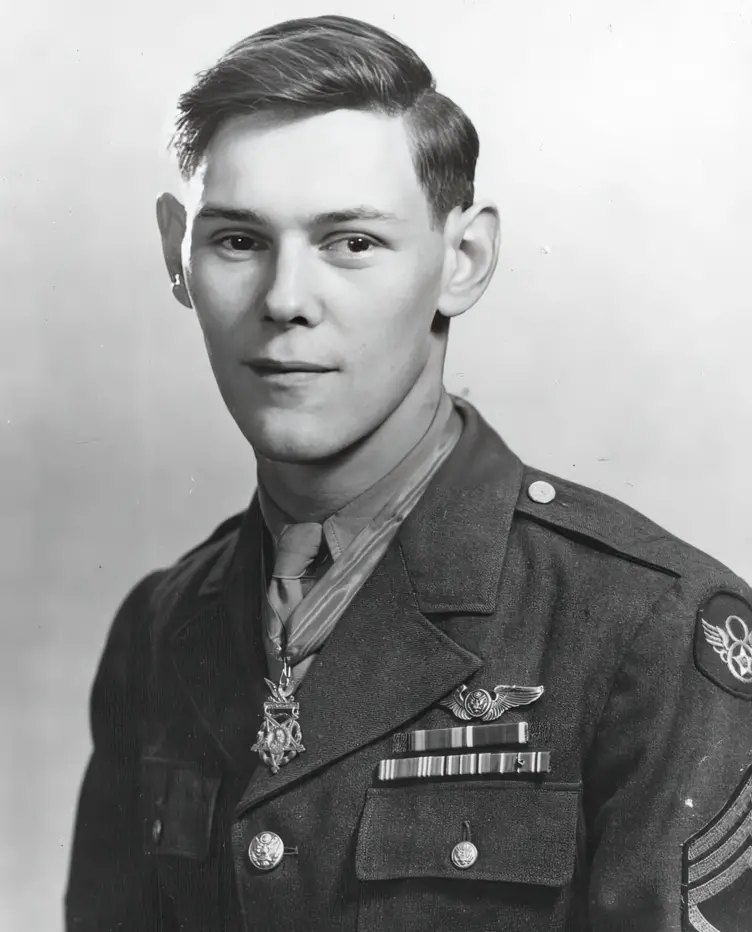
Relentless Attack and Defiance
As more enemy fighters joined the fray, the sky around the Jersey Bounce Jr. became a chaotic ballet of death. Nine fighters, a mix of 109s and 190s, danced around the crippled bomber, unleashing a relentless storm of bullets. The American gunners, despite their own wounds and the growing despair, fought back with everything they had. Waist gunner Ralph F. Burkhardt, alongside his fellow crew members, continued to fire at the encroaching enemy. Every trigger pull was a hope, a defiance against the grim odds.
Inside the aircraft, the situation was dire. Bill Simkins, manning the top turret, witnessed the plight of his fellow crewman and realized the gravity of their situation. With a grim determination, he and Burkhardt managed to pull the injured Bus away from his destroyed position. They worked quickly, trying to stabilize him as much as they could amid the chaos.
As the battle raged, the Jersey Bounce Jr. became a lone, floating fortress, each of its defenders marked by blood and resolve. Vossler, despite his severe injuries, pushed through the pain. Adrenaline dulled the agony, and with an almost superhuman effort, he returned to his post. He fired burst after burst at the enemy, driving some away, damaging others. Each time an enemy plane veered off, it was a small, fleeting victory in their ongoing fight for survival.
The Final Blow
However, the respite was short-lived. In a cruel twist of fate, as the battle seemed to reach its peak, a BF-109 swooped down from above, unleashing a 20-millimeter shell directly at Vossler’s position. The shell made impact with a terrifying precision, exploding right in his face. The world erupted into a cacophony of pain and noise, as he was enveloped in a storm of shrapnel. The force of the blast threw him back, slamming him onto the bomber’s floor. In that moment, covered in wounds and blood, Vossler was convinced his time had come. The thoughts that raced through his mind were those of a man facing the end—reflective, accepting, yet underscored by a poignant sense of life’s brevity.
The chaos eventually stilled. The attacks ceased as suddenly as they had begun. The crew, battered but unbroken, slowly came to the realization that they had survived. As they took stock of their situation, the grim condition of their comrades became apparent. As they lifted him onto the radio operator’s chair, his survival seemed nothing short of miraculous.
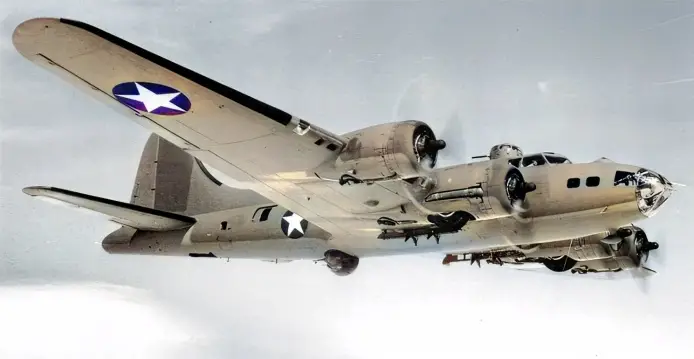
Desperate Measures
In the battered cockpit of the Jersey Bounce Jr., pilot John Henderson was fully aware of the dire straits they were in. With the aircraft severely damaged, losing altitude with every passing second, the situation was grim. Henderson’s eyes scanned the cockpit; the instruments that were still functional painted a bleak picture. The wings, riddled with bullet holes and shrapnel damage, struggled to keep them airborne. Half the gauges were unresponsive, and of the four engines that should have been their lifeline, two were completely out, leaving them limping through the sky, still deep within enemy territory.
The realization was stark and unavoidable—they were not going to make it. The North Sea was still far ahead, and with their current condition, even reaching the relative safety of the beach seemed like a distant dream. In a desperate bid to buy time and altitude, Henderson made a critical decision. He ordered the crew to throw away everything non-essential. The men responded with urgency, discarding extra ammunition, spent casings, emergency oxygen tanks, and even their guns—every ounce of weight mattered in their fight against gravity.
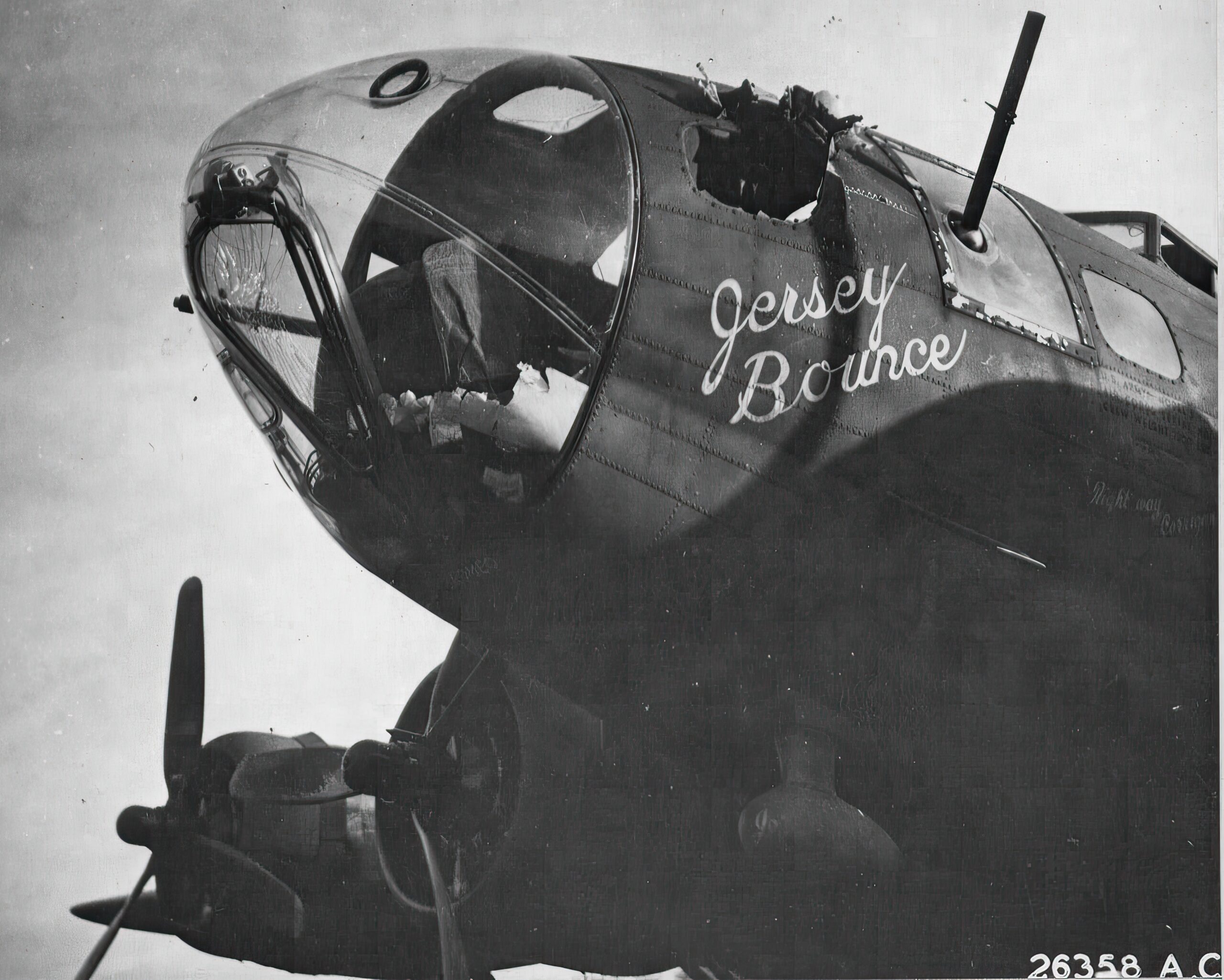
Vossler’s Selfless Offer
As the crew worked frantically to lighten the aircraft, Vossler, lying in a state between life and death, made a shocking proposition. Weakly, he suggested that they throw him out of the aircraft to save weight. His voice was barely a whisper, but it carried the weight of sacrifice. The crew did not respond, the suggestion hanging in the air like a heavy fog. Vossler, with a sense of grim acceptance, insisted again, urging them to save themselves. But the crew was resolute—no one would be left behind. They silenced him, not with disregard, but with a firm determination that they would all make it out together.
With the aid of the crew, who guided his hands, Vossler managed to set up the radio. Operating purely by touch and memory, he began the delicate task of contacting base. Despite the pain, the fear, and the uncertainty, Vossler’s voice remained steady, as he calmly relayed their position, their situation, and their desperate need for rescue.
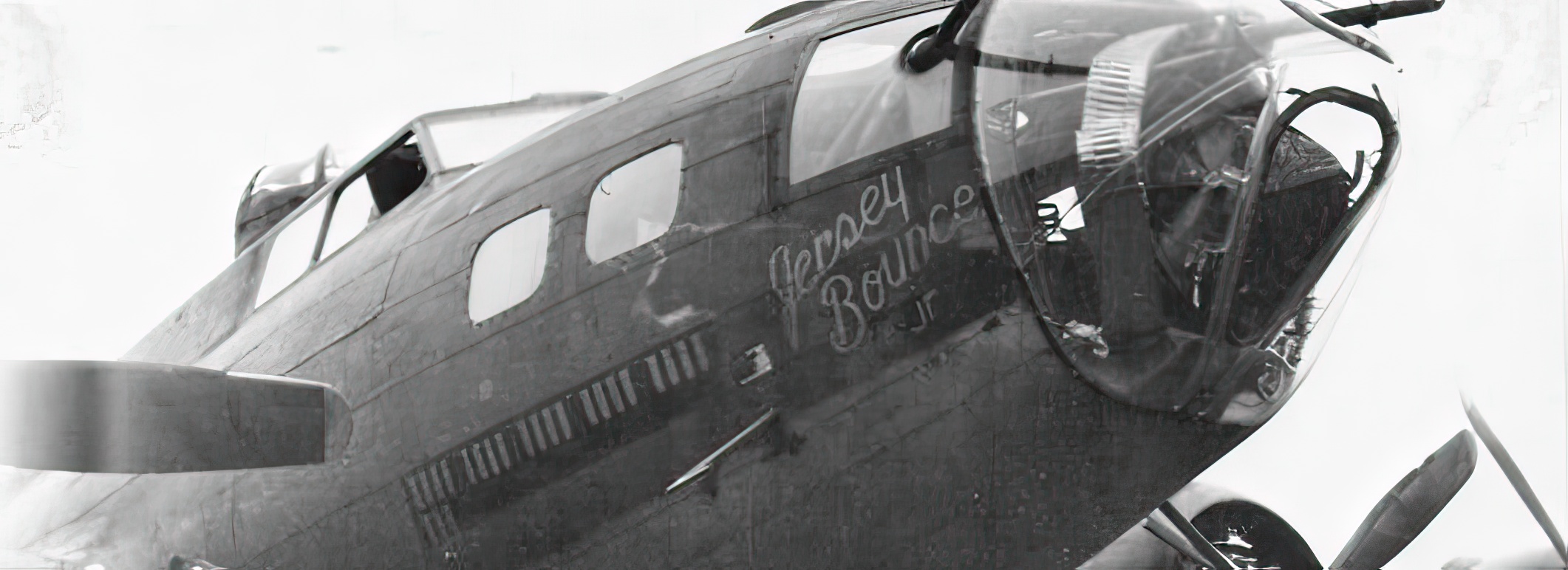
The Final Stretch to Survival
After what seemed an eternity of tension and uncertainty, the 45 minutes of constant communication between the battered B-17 and the base finally paid off. The aircraft, now barely above the waves of the North Sea, had reached the rendezvous point. The crew’s eyes, filled with a mixture of anxiety and hope, scanned the horizon for their rescuers. Then, as if in answer to their prayers, four flying boats appeared, cutting through the sky to meet them.
With the flying boats in position, it was up to Henderson to bring the Jersey Bounce Jr. down safely. Despite the extensive damage, the compromised controls, and the unpredictable sea below, he managed a perfect water landing. The aircraft touched the waves with a grace that belied the violence it had just endured. Thanks to Vossler’s successful SOS and the relentless determination of the crew, multiple planes and boats were already there, waiting to provide aid and transport the wounded.
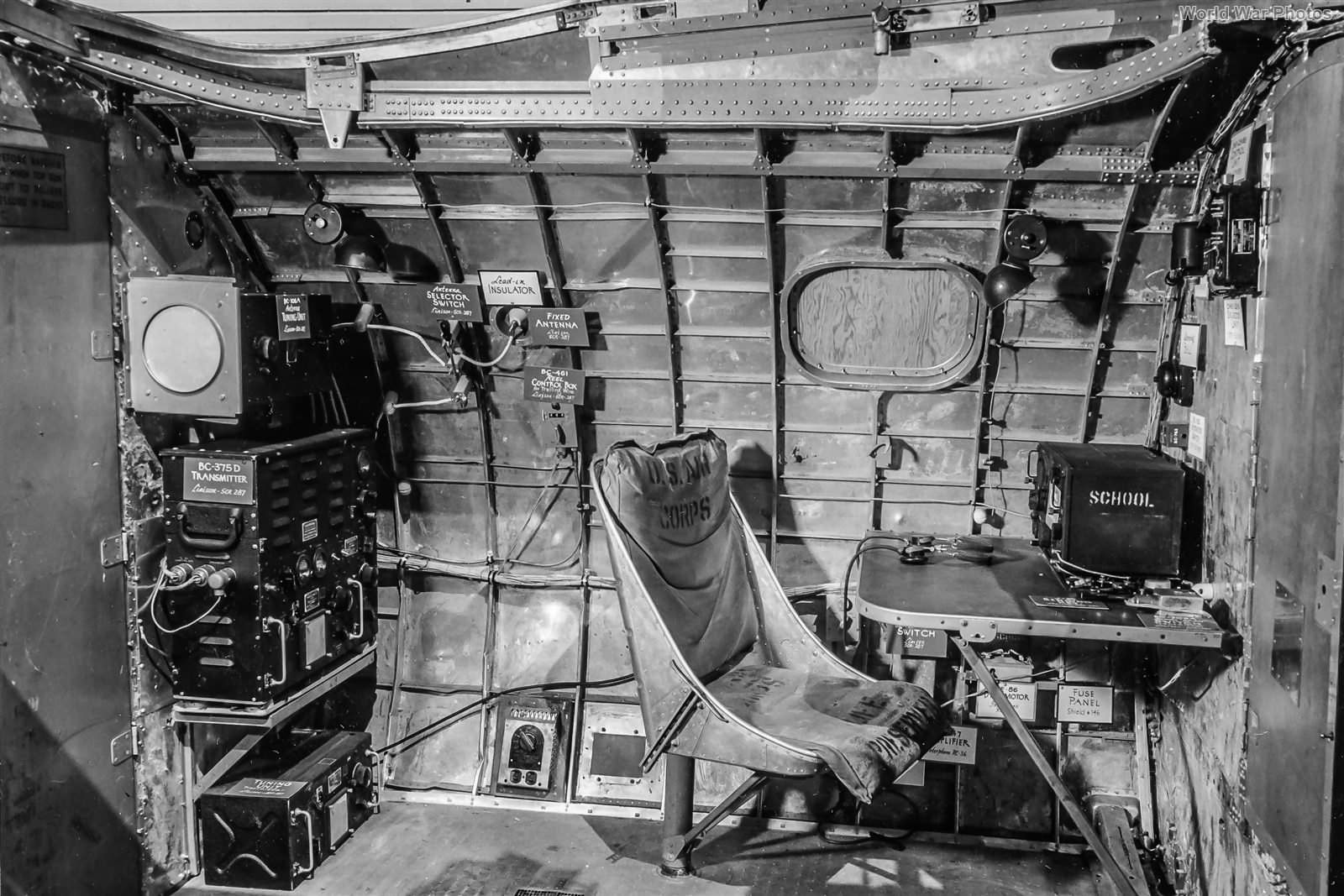
A Hard-Won Miracle
One by one, the crew were helped out of the aircraft, their bodies showing the scars of their brutal journey. The wounded were given immediate medical attention, their conditions varying from critical to stable, but all alive. Among them was Vossler, who had fought through pain and near blindness to keep the radio communication going. Despite losing one of his eyes and sustaining other serious injuries, he had played a crucial role in ensuring the survival of his crew. His courage and resilience did not go unnoticed.
As the men were transported to safety, the reality of their miraculous survival began to sink in. Each member of the crew had faced their own private battle, their own moments of despair and resolve. Vossler, back in the safety of the hospital, would reflect on his experience. He remembered thinking, after being hit, that he was bound to receive a Purple Heart. But as it turned out, his valor and the extraordinary circumstances of his bravery earned him the highest military honor—the Medal of Honor. His actions, along with the collective efforts of the crew, would be remembered as a remarkable story of survival, teamwork, and the indomitable human spirit.
